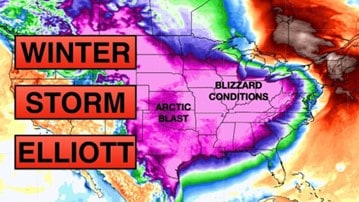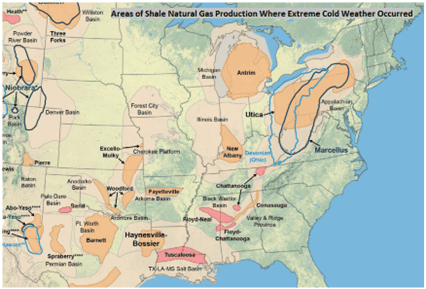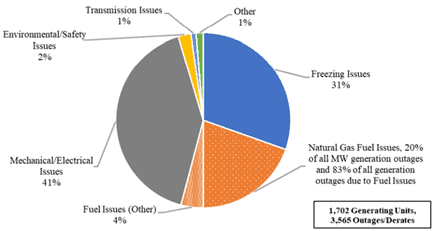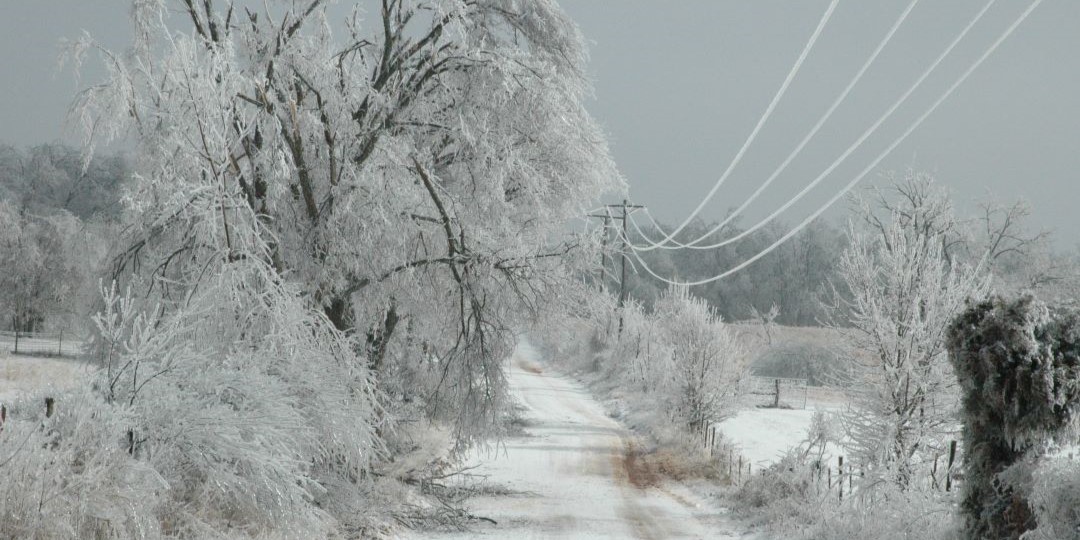By Stefano Schnitger, NERC Reliability Specialist
FERC and the North American Electric Reliability Corporation (NERC) released the final report on Winter Storm Elliott. This storm was an extreme cold weather event that occurred from December 21 to 26, 2022.
Winter Storm Elliott was an extratropical cyclone that created crippling conditions. These conditions included blizzards, high winds, snowfall, and record cold temperatures across the United States and parts of Canada. Geographically, it was a very large storm. The storm affected all U.S. states from Colorado to the eastern seaboard and as far south as Miami, Florida. Winter Storm Elliott had high winds, with gusts up to 60 miles per hour. The storm caused rapid temperature drops to subfreezing levels. Temperatures in Charleston, West Virginia dropped 42 degrees in six hours. The Tennessee Valley Authority reported a drop of 46 degrees in five hours.

Winter Storm Elliot contributed to power outages for millions of electricity customers. In the United States alone, 1,702 individual generating units in the Eastern Interconnection experienced 3,565 unplanned events (outages, derates, or failures to start). Of the 1,702 generating units impacted, 47 percent were natural gas, 21 percent was wind, 12 percent coal, 3 percent solar, 0.4 percent nuclear, and 17 percent other (oil, hydroelectric and biomass). Each individual unit could, and often did, have multiple outages from the same or different causes. At the worst point of the storm, there were 90,500 MW of coincident unplanned events (meaning they all occurred at the same time).
Winter Storm Elliot also impacted the natural gas infrastructure. The power generation and natural gas sectors of the American energy system have become highly interdependent. Natural gas represents the largest fuel resource for power generation, while power generation is the largest consumer of natural gas. Over the last two decades, natural gas fueled power generation has doubled. Today, natural gas represents almost 40 percent of total power generation. Winter Storm Elliott caused unplanned outages on many natural gas wellheads. This was mainly due to wellhead freeze-offs, other frozen equipment, and weather-related poor road conditions that prevented maintenance. This led to significant natural gas production decreases. Gas production experienced the greatest declines in the Marcellus and Utica Shale formations, where it dropped by 23 to 54 percent.

The cold weather from Winter Storm Elliott was forecasted well in advance. Grid operators knew that frigid weather was coming. Many issued cold weather preparation notices to their Generation and Transmission Owners and Operators. Generator Owners had ample opportunities to prepare for the extreme cold weather. Regional Entity workshops provided Generator Owners with annual guidance to prepare for winter. These workshops provided detailed suggestions for how to protect generating units from freezing. Yet, despite these reminders, guidance, and their own preparation, over 75 percent of the generating unit failures occurred at temperatures above the units’ documented operating temperatures.
Winter Storm Elliott was the fifth event in the past 11 years in which cold weather-related generation outages jeopardized grid reliability. It was also the fourth event that triggered the need for firm load shed. In response to previous cold weather events, some changes were implemented. However, Winter Storm Elliott showed that the power generation and natural gas infrastructures continue to be severely challenged by extreme cold weather events.
Multiple extreme cold weather event reports have detailed the same three primary causes of the unplanned generating outages. Ninety-six percent of all outages, derates, and failures to start were attributed to these three causes:
- Freezing Issues (31 percent)
- Fuel Issues (24 percent)
- Mechanical/Electrical issues which are correlated with temperature (41 percent)
Mechanical/Electrical Issues indicated a clear pattern related to cold temperatures—as temperatures decreased, the number of impacted generating units increased. Many reports have made recommendations aimed at preventing recurrence of these events, and some progress has been made. However, key drivers of these events remain unaddressed, especially the freezing of natural gas infrastructure.

The Winter Storm Elliot final report outlines several recommendations for the power generation sector. Prompt development and implementation of revisions to the Reliability Standards are recommended. These revisions are aimed at strengthening a generators’ ability to maintain extreme cold weather performance. The report also suggests robust monitoring of currently approved cold weather Reliability Standards. Several recommendations are made to prevent generating unit freeze issues. One recommendation is targeted at those units that failed above their designated operating limits. Another recommendation suggests that Generation Owners communicate changes in their operating limits to the BA in real time. Finally, the report recommends another blackstart study, like the one currently being conducted for the ERCOT Interconnection.
Several recommendations are in response to the natural gas production, processing, and pipeline issues. The report recommends that Congress and state legislatures take action to establish reliability rules for natural gas infrastructure. There are several recommendations concerning natural gas-electric coordination. The report recommends efforts to enhance situational awareness through communication. This communication will be among the natural gas infrastructure entities, and crossover to the electric grid entities. The report also recommends a study to analyze whether additional natural gas infrastructure is needed to support the reliability of the electric grid. This includes analyzing if additional interstate pipelines and storage is needed.











